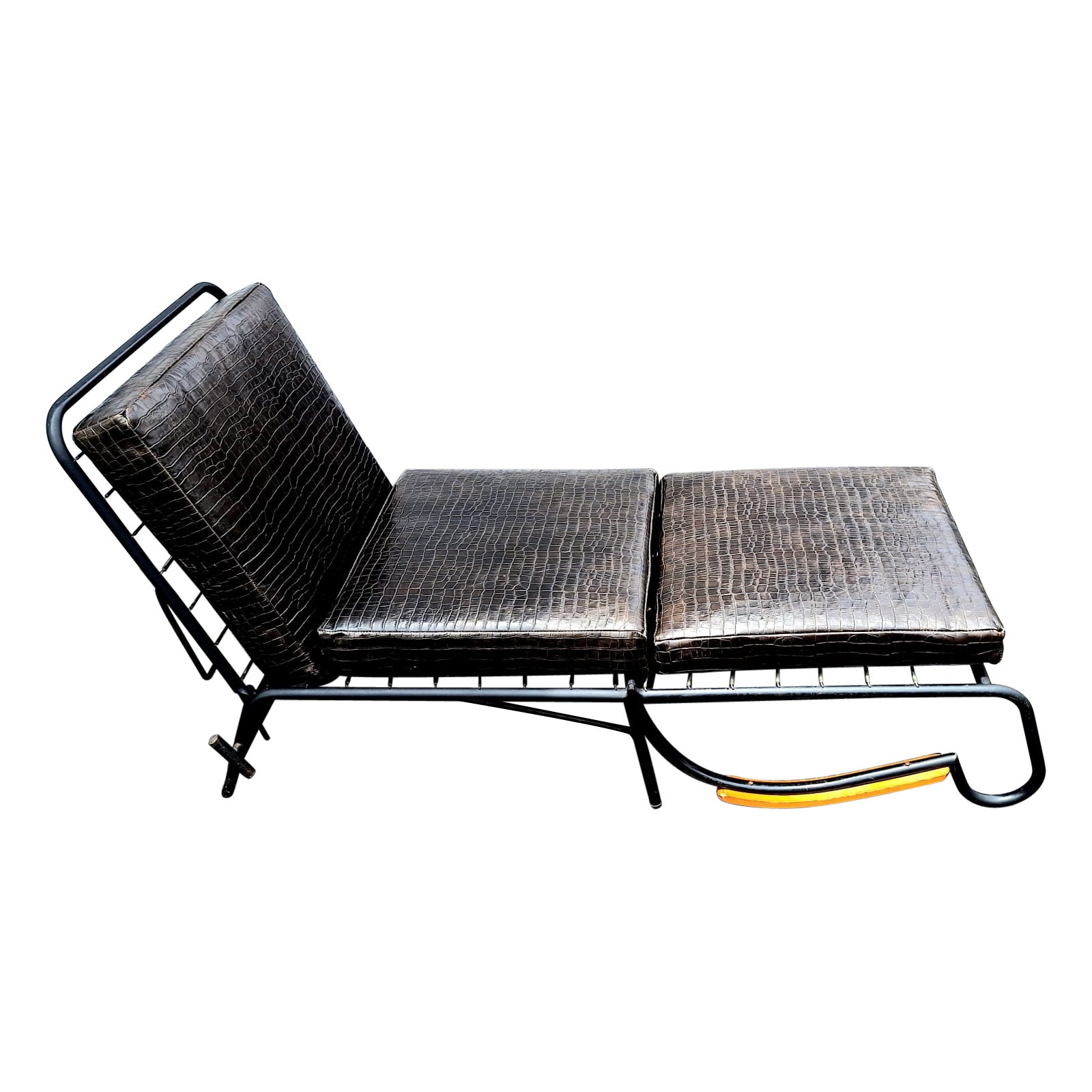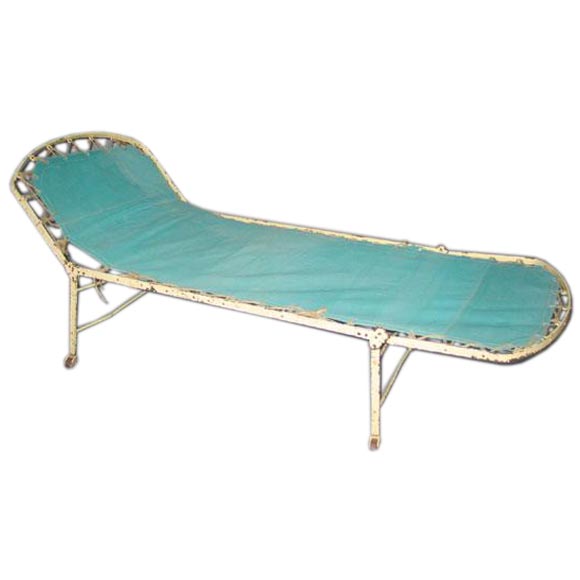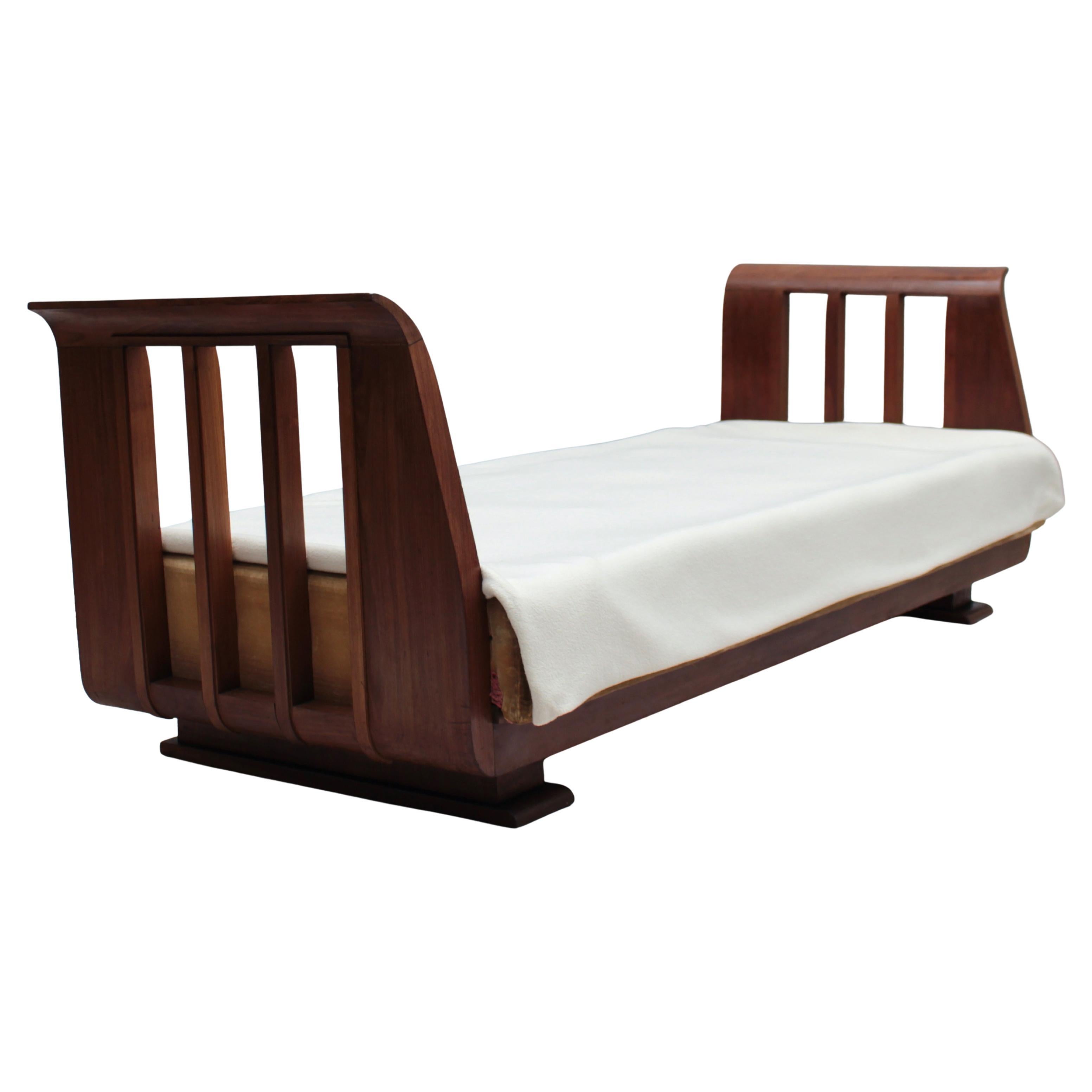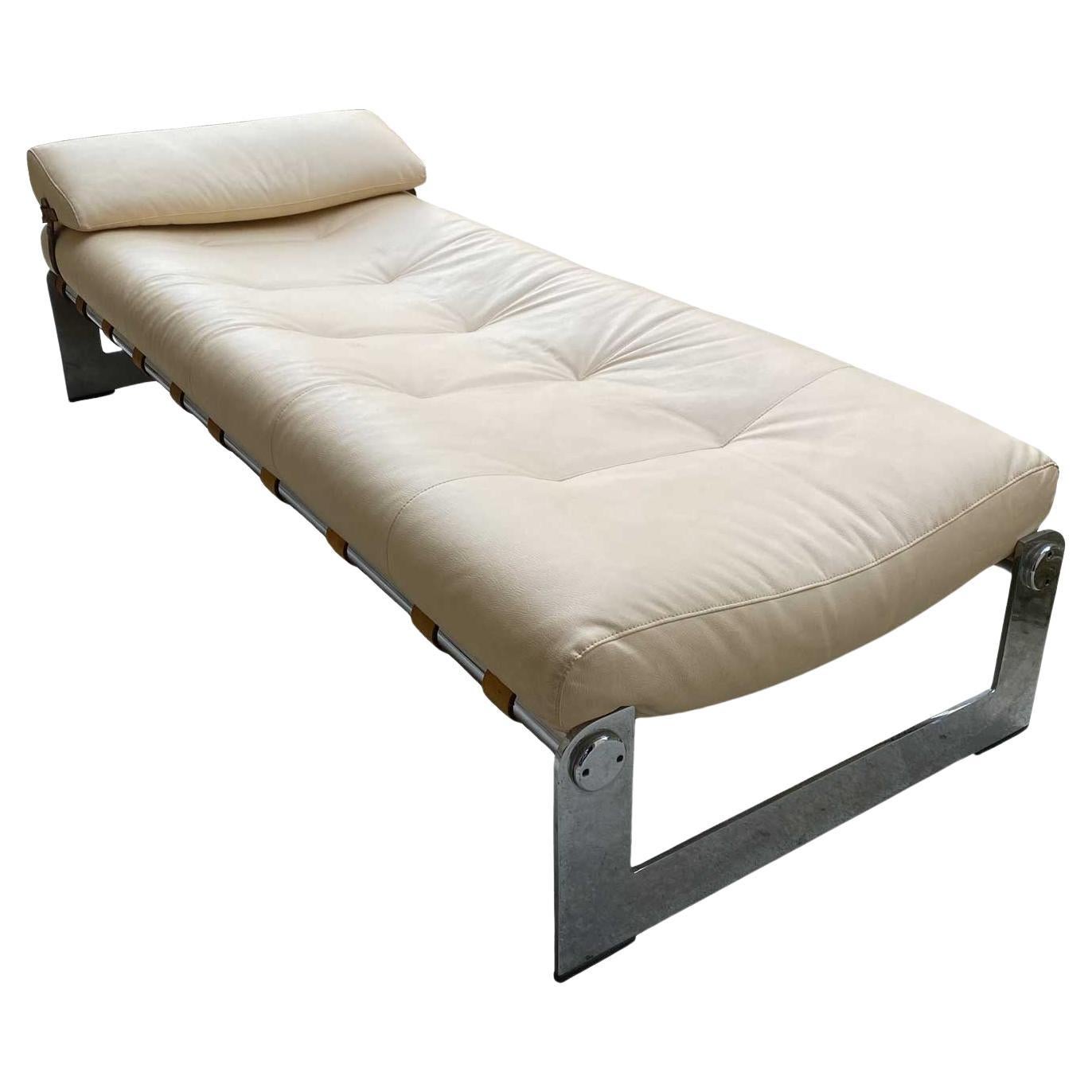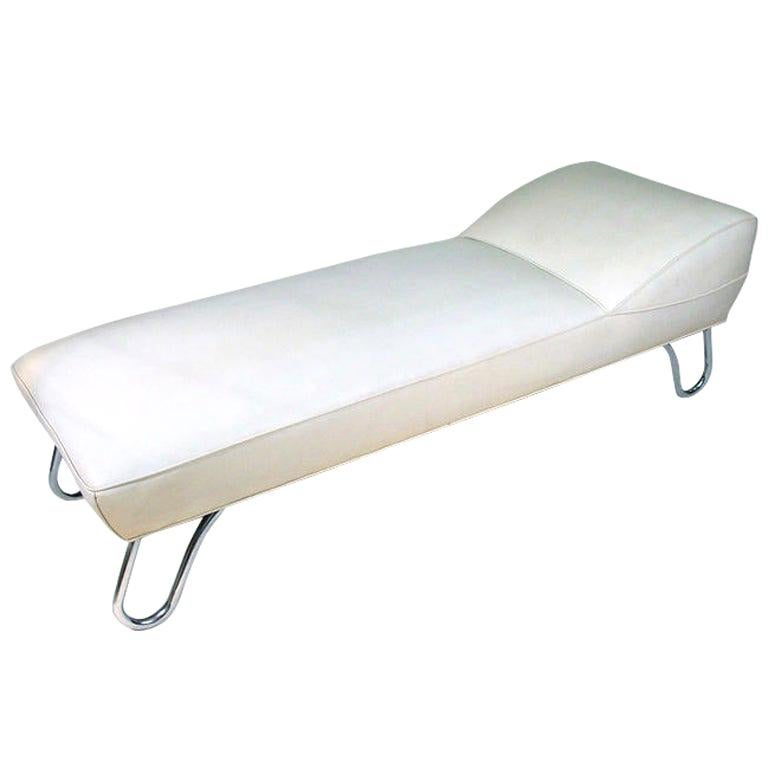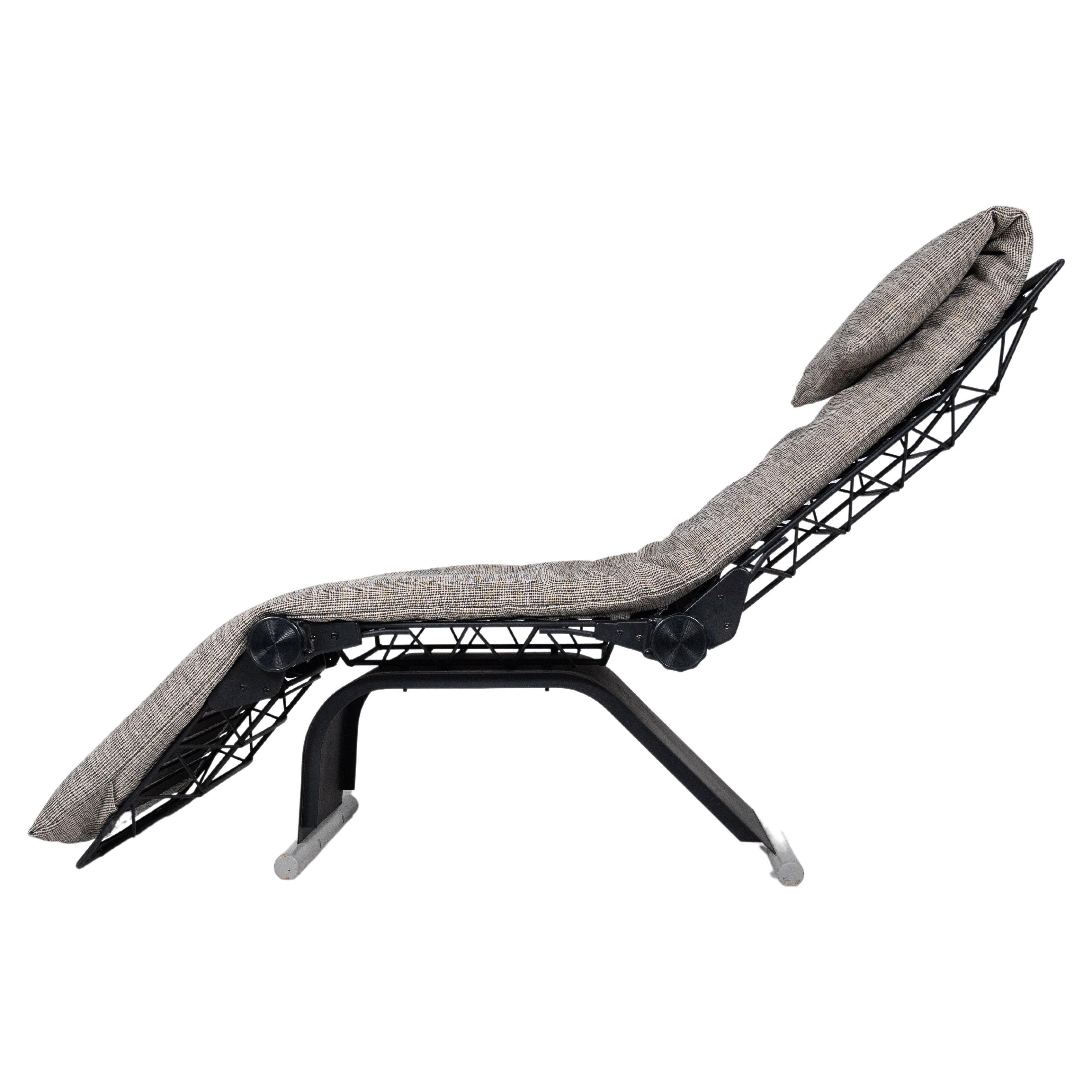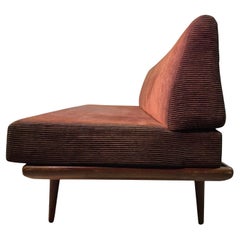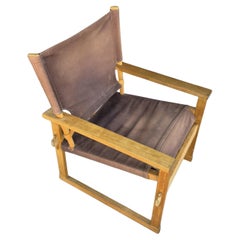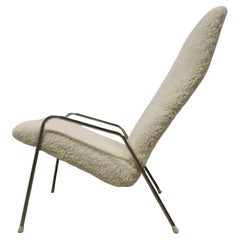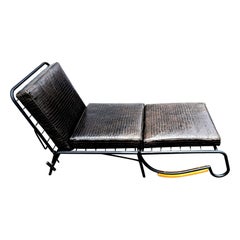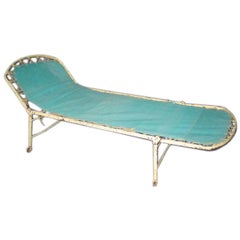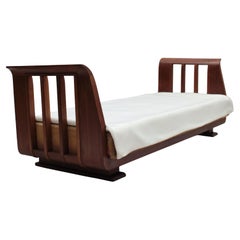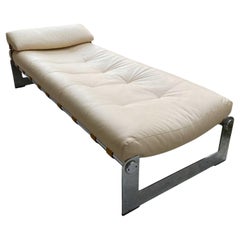Items Similar to Infirmerie daybed from the monastery of Holtum, France 1900s
Want more images or videos?
Request additional images or videos from the seller
1 of 9
Infirmerie daybed from the monastery of Holtum, France 1900s
$2,852.39
$3,565.4920% Off
£2,120.10
£2,650.1320% Off
€2,396
€2,99520% Off
CA$3,938.37
CA$4,922.9720% Off
A$4,367.36
A$5,459.2020% Off
CHF 2,294.73
CHF 2,868.4120% Off
MX$53,361.76
MX$66,702.2020% Off
NOK 28,710.15
NOK 35,887.6820% Off
SEK 26,949.38
SEK 33,686.7220% Off
DKK 18,244.34
DKK 22,805.4320% Off
About the Item
Original French infirmary daybed. It came from the monastery of Holtum in the Netherlands. The monastery was run by a French order of nuns who came to the Netherlands in 1901 after being exiled in France. This daybed was manufactured in France and came to the Netherlands with the nuns order. It actually shows great resemblance to the daybed designed by Jean Prouve and Jules Leleu for the Martel Janville sanitarium in the 1930s. It is plausible that Prouve was inspired by this older design.
The Holtum monastery was sadly demolished in 1976. Parts of the inventory were salvaged by the locals and this daybed was obtained from one of the locals who had it in his possession since 1976.
This daybed has an adjustable back. The seat and back are made from woven metal springs. It has wooden armrests and the cushions, filled with cotton, are original and in fair condition. The frame has a patina, paint loss and surface rust. Structurally still in usable and fair condition.
The height is adjustable from 73 to 125cm measured from the top of the headrest. The length varies from 167 to 210cm so even a tall person can lie completely flat. The seating height is 53cm.
- Similar to:Jean Prouvé (Designer)
- Dimensions:Height: 27.17 in (69 cm)Width: 82.68 in (210 cm)Depth: 27.17 in (69 cm)Seat Height: 20.87 in (53 cm)
- Style:Art Deco (Of the Period)
- Materials and Techniques:
- Place of Origin:
- Period:
- Date of Manufacture:1900-1910
- Condition:Wear consistent with age and use. Minor losses. Minor structural damages. Minor fading. small missing parts or partially missing parts Surface rust chipped paint Color fading.
- Seller Location:ECHT, NL
- Reference Number:1stDibs: LU9426237125012
About the Seller
5.0
Vetted Professional Seller
Every seller passes strict standards for authenticity and reliability
1stDibs seller since 2023
19 sales on 1stDibs
Typical response time: <1 hour
- ShippingRetrieving quote...Shipping from: ECHT, Netherlands
- Return Policy
Authenticity Guarantee
In the unlikely event there’s an issue with an item’s authenticity, contact us within 1 year for a full refund. DetailsMoney-Back Guarantee
If your item is not as described, is damaged in transit, or does not arrive, contact us within 7 days for a full refund. Details24-Hour Cancellation
You have a 24-hour grace period in which to reconsider your purchase, with no questions asked.Vetted Professional Sellers
Our world-class sellers must adhere to strict standards for service and quality, maintaining the integrity of our listings.Price-Match Guarantee
If you find that a seller listed the same item for a lower price elsewhere, we’ll match it.Trusted Global Delivery
Our best-in-class carrier network provides specialized shipping options worldwide, including custom delivery.More From This Seller
View AllMinerva daybed by P. Hvidt & O. M. Nielsen for France & Son, Denmark 1950s
By Orla Mølgaard-Nielsen, France & Daverkosen, Peter Hvidt
Located in ECHT, NL
Iconic design from mid century Denmark. A three seater sofa from the "Minerva" range. Designed by Peter Hvidt and Orla Mølgaard Nielsen. Manufactured by France and Daverkosen. The so...
Category
Mid-20th Century Danish Scandinavian Modern Daybeds
Materials
Steel
Safari lounge chair by Poul Hundevad for Vamdrup, Denmark 1950s
By Poul Hundevad, Hans J. Wegner, Kaare Klint, Vamdrup Stolefabrik
Located in ECHT, NL
Mid century modern safari or campaign chair. Designed by Poul Hundevad and produced by Vamdrup in the 1950s.
The frame is made from oak. It has a seat and back made from canvas.
The ...
Category
Mid-20th Century Danish Scandinavian Modern Lounge Chairs
Materials
Leather, Canvas, Wood
Hand crafted throne chair by Cor de Ree, Netherlands 1990
By Charles Rennie Mackintosh
Located in ECHT, NL
Throne chair by Cor de Ree. The chair is hand crafted using scrap and new pieces of copper and brass.
Cor de Ree is a Dutch artist who specialized in making art objects out of brass ...
Category
Late 20th Century Dutch Art Deco Chairs
Materials
Brass, Copper, Tin
$2,190 Sale Price
20% Off
Rare Contour 1 chair by Alf Svensson for Ljund, Sweden 1950s
By Alf Svensson, Artifort
Located in ECHT, NL
Very rare reclining lounge chair. Designed in the 1950s by Alf Svensson and manufactured by Ljund industrier Sweden.
It has a nickel plated frame with a seat that is adjustable in 2 ...
Category
Mid-20th Century Swedish Scandinavian Modern Lounge Chairs
Materials
Metal, Nickel
$2,380 Sale Price
20% Off
Curved canapé sofa by Rodolfo Dordoni for Moroso, Italy 1980s
By Rodolfo Dordoni, Moroso
Located in ECHT, NL
Postmodern design curved sofa. Designed by Rodolfo Dordoni for Moroso in the eighties. Part of the "waiting" series. The curved seat is covered with blue microfiber fabric. It stands...
Category
Late 20th Century Italian Post-Modern Canapes
Materials
Metal, Aluminum
$2,876 Sale Price
20% Off
Custom "Wink" lounge chair by Toshiyuki Kita for Cassina, Italy 1980s
By Cassina, Toshiyuki Kita
Located in ECHT, NL
Model 111 "Wink" lounge chair. Designed in the 1980s by Toshiyuki Kita for Cassina. It is adjustable in multiple ways. The back is reclinable into an almost horizontal position. The ...
Category
Late 20th Century Italian Post-Modern Lounge Chairs
Materials
Metal
$2,190 Sale Price
20% Off
You May Also Like
French Art Deco Daybed - Arm Chair
Located in Los Angeles, CA
This exquisite Art Deco French daybed is a perfect blend of vintage charm and modern functionality. It has been new reupholstered in dark brown leather, offering a sophisticated an...
Category
Vintage 1930s French Art Deco Daybeds
Materials
Metal
French Early Modern Style Fully Adjustable Campaign Daybed or Chaise Longue
Located in New York, NY
A rare 19th century French wrought iron Campaign bed circa 1870 having folding capacity and a replaced burlap platform.
Comfortable and composed ...
Category
Antique 19th Century French Modern Chaise Longues
Materials
Metal
Fine French 1930s Daybed / Sofa Attributed to Lucien Rollin
By Lucien Rollin
Located in Long Island City, NY
A fine French Art Deco stained walnut sofa/daybed attributed to Lucien Rollin (frame only).
Inside dimensions of mattress/cushion area are 72 5/8" x 27 1/2"
Category
Vintage 1930s French Art Deco Daybeds
Materials
Wood
Gilles Bouchez French architect leather daybed for Airborne 1970
By Gilles Bouchez
Located in Grenoble, FR
Gilles Bouchez ( 1930)
, famous French architect, has designed a limited series of furniture with a chrome steel structure and leather strap. This is the chaise longue or daybed, the...
Category
Vintage 1970s French Mid-Century Modern Loveseats
Materials
Chrome
Kem Weber Art Deco Steamer Chaise Lounge, Daybed
By Kem Weber, lloyd manufacturing co.
Located in Van Nuys, CA
Original "steamer" chaise lounge or daybed by the well known Lloyd Manufacturing Co, features stunning tubular bent chrome legs and dramatic white Naugahyde upholstery. Attributed to...
Category
Vintage 1930s American Art Deco Daybeds
Materials
Chrome
$2,746 Sale Price
25% Off
Mid-Century Modern Daybed, Italy, 1960s
Located in Brussels, BE
Mid-Century Modern Daybed, Italy, 1960s
Category
Vintage 1960s Italian Mid-Century Modern Daybeds
Materials
Metal
More Ways To Browse
Monastery Furniture
Antique Nun
French Monastery
Antique Metal Daybed
Tubular Daybed
Used Mobel Bedroom Furniture
Zabuton Sofa
Antique Pine Daybed
Chinese Elm Daybeds
Gold Leather Daybeds
Opium Daybed
Window Daybed
Yellow Daybed
18th Century French Daybed
1960s Plastic Daybeds
20th Century Birch Daybeds
Chinese Day Bed
French Cane Daybed
